It was an early start for us today, as we all woke up at 4.30 in the morning and of course, it’s freezing cold. We all wanted to see the view of this antique village from the Ogimachi Joseki Observatory Deck before everyone else since it will be so crowded later during the day. We also wanted to catch the sunrise which we didn’t get to because of the mountains, but we did get to see the most spectacular view we could’ve ever imagined. Later we learned that Shirakawa-go is actually famous for the heavy snowfall, so the pathway to the observatory was closed, we have to walk through the main road to get there, which was quite far to travel on foot and luckily Oota-san, the owner of the 100+ years old house we’re staying at kindly offered us a ride to the Ogimachi Joseki Observatory Deck.
We were snuggling to ourselves, to our jackets, as it was -2.8 degree Celsius and I personally haven’t experienced that before, so it was indeed cold and maybe a bit intense. My gloves were a bit wet because of the snowman we made last night and now the tips of the finger parts of the gloves were actually frozen but I still wore them. Then one of us looked up and shouted telling us to look up at the sky, I’m overwhelmed. The stars, the constellations, the shiny tiny dusty like stars were amazing. Literally, the sky was full of it, as it was like everywhere you stretch your eyes to see, there were stars and shiny dusty dots. The last time I saw this view was in Kundasang, Sabah. But this is different, maybe because of the cold, it felt special, maybe because I couldn’t really feel my fingertips it felt unusual, maybe because it’s in Japan it felt emotional.
Woke up at 4:30 am to see from the Observatory Deck
The view at the Shirakawa village before the sunrise
It didn’t end there before the sun made it way out slowly, we saw the most amazing view we could’ve ever imagined. We saw the Shirakawa village in blue light, literally blue in colour. It was breathtakingly beautiful. All the Gassho-style houses facing towards us, with snow-covered roofs, with the yellow lights on, streets with a few cars occasionally pass by, with a background of the valleys, all in a blue coloured sky, it’s purely beautiful and calm. As the time passed, it became brighter and Ota-san offered us some warm drinks from the vending machine. The bottle was very warm I want to hug it. We went back to the house with the car without any noise, as we’re still amazed by the view.
Breakfast was special; one of the households danced for us a traditional dance and played some traditional musical instruments too. Later we all tried the Sasara and Binzasara both are traditional Japanese musical instruments made from wood. We all sang one song using the Sasara and Binzasara. As happy as we were staying in Ota-san’s house, we had to part our way from the house and continue our trip.
Kanda House, breathing in the heritage of wisdom
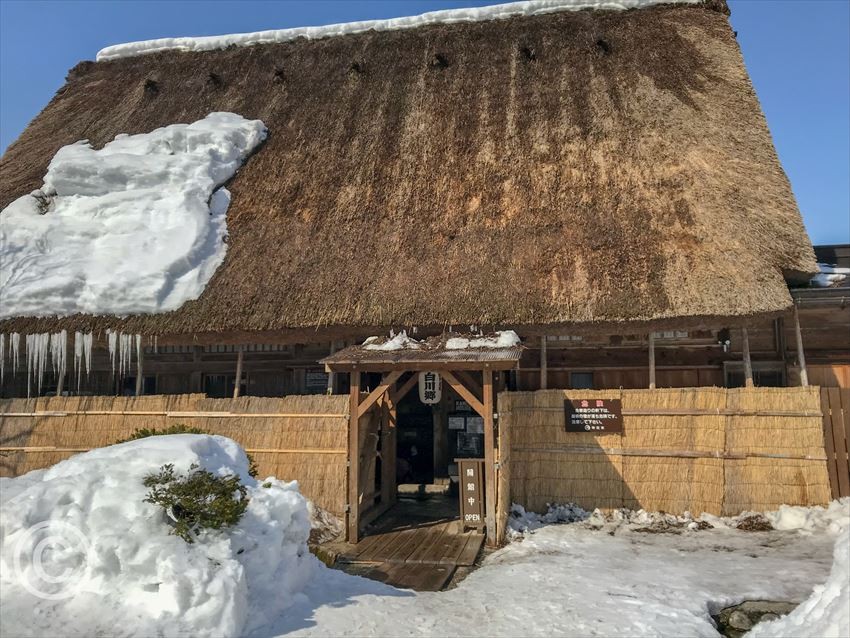
We walked through the village of Shirakawa until we reached the Kanda House, the biggest house in Shirakawa village. It took ten years to build this house back then in 1800. We’re informed that the current generation of the Wada family still lives here in this house. We took a tour of the house while being guided with one of the households; she explained everything about the house from the structure, functions, and materials. What stunned me the most about this village is the knowledge, effort, and balance. Well, the Gassho-style houses here are earthquake proofs, means that there’s a whole of knowledge behind it that fruited from countless efforts back in the days. Well we don’t get to know something instantly, so I’m saying that back in the days, they managed to design and build quake-proof structures that could be after countless times of try and error, there’s this and then there’s the snow, Shirakawa-go has quite extreme snowfall which is one of Japan’s heaviest. The normal snow depth is actually 2-3 meters high. So they actually build all these houses facing one direction, and that direction is in the path with the winds so that the snow on the roof can be melted when the wind blows. The position of the house and the design of the roof also help to melt the snow with the sunshine, when the sun rises and melts one side of the roof and when the sun sets it melts the other.
There’s one saying in Arabic which means that “preserving and keeping the good old (tradition) ways, and adapting to newer (modern) way only when it’s better than the old way”. Why is it relatable here? Well, another way of saying it is Japanese is indeed so good in keeping the traditions alive, preserving it. For example, the technology behind the quakeproof structures are still being used nowadays in most bridges in Japan, and they’ll keep using it unless they find a new way which is better. So old isn’t always bad and new isn’t always good. Then there’s a balance. Fire is strictly prohibited in Shirakawa-go, they even make a designated smoking area. While the fire is bad and dangerous for the woods (materials of the house) but its smoke is actually good for the woods. The entire house is built without a single nail; the roof can withstand the outstanding weight of the snow and it actually lasts for 50 years. What makes the house and the roof so strong is the smoke, the house is so well ventilated that the smoke from the center of the house can spreads entirely throughout the house. But these days, the roof only lasts for 25 years mainly because most of the villagers didn’t live in it, so there’s less fire which means less smoke for the house. Other functions of the house are the attics, which is actually their workspace. Back in the days, the villagers produced silk from silk farming, and all these works were actually held at the attics of the house. I’m amazed by the house, all the designs, functions, how it stands the snow and earthquake. It’s mindboggling actually to think back in the days they managed to achieve something so great in order to survive the harsh weather and fierce earthquakes. To think that they managed to build a structure that can spread the force evenly without any damage when the earthquake happens is unbelievable. Which makes me think what I have achieved in my life?
Morihashi, recipes through centuries
After being fed with a lot of information about the house, we made our way to the bus terminal to travel back to Kanazawa city. We did stop by a few souvenir shops on the way. Leaving Shirakawa-go is a bittersweet moment for me, sad for leaving but also happy for the next city. It only took around 1 hour to get back to Kanazawa but the view was very beautiful. Well, we did pass a lot of tunnels on the road, so we prepared our camera and aim to the windows to capture the view before we got into another tunnel. We arrived at Kanazawa Station around 12.30 in the afternoon and yeah we’re starving. We went to Omi-cho Market and had don or rice bowl for lunch in a restaurant near the market area. After having such a splendid meal, we were too full that we decided to walk from the restaurant to Kanazawa Museum of Wooden Japanese Sweet Moulds or also known as Morihachi Main Store.
How do I say this, well there’s actually a lot of things around us that could be precious and valuables, if we keep it, preserve it, learn the history of it, teach it for the future generations. If not, it will be forgotten. Same as craftsmanship, we see a lot of master craftsman is mostly old people if no youngster studies it and continues the tradition it will be gone. That is what I thought after visiting this museum. Japan is very good at keeping all these things, they learn from history, they respect and cherish it. Particularly in Kanazawa which has many local traditional heritages, to name a few like these sweets and its molds, Kutaniyaki or traditional Japanese porcelain ware. So Morihachi is a Japanese sweets store which has been around for 393 years, going back far from 1625, this is indeed the best example why I said Japan is the best in keeping their tradition alive. At that time, sweets were exclusively made for the higher or elite status among the people like the lords and shotguns. So the founder of this store is actually one of those who made the sweets for the lords back then. Until now after more than a dozen generations of the family, we’re able to see, learn, and eat the sweets which have dated far back. What special about these sweets were the molds of course, they made a whole museum of it. These wooden molds were hand carved by a master craftsman to all shapes and styles, from animal to flowers, from people to carriages. There were a few animals I noticed a lot in the carving of the molds; they were crane, turtle, bird, and fish. The Japanese believe these animals as symbols for long life and happiness. We saw a lot of Ume (plum blossom) carvings too, as it’s the symbol for the Royals. We can see in the museum wooden mold that is more than hundreds of years old, which are still used for producing sweets until 2008. There are a lot of beautiful porcelain wares or Kutaniyaki in the museum. So it turns out that one of Kanazawa’s traditions was to serve the sweets in these beautiful porcelain wares.
After seeing all the exquisite hand-carved wooden mold, we actually get to try and make Japanese sweets. There is two type of sweets made from the wooden mold, the one we made was Rakugen. We’re guided by one of the staff there; she also guided us through the museum beforehand. So we didn’t just see and listen, but we can experience and feel the making process which you can too, the sweets class isn’t expensive, but the experience of it is. We all made ourselves some and ate there with a glass of matcha green tea. We actually made quite a lot, we even pack some to bring back home, and of course, it was sweet and delicious. We still couldn’t get enough sweets; we spent some time at the sweets shop after the class and bought some of course. There are other branches as well but this one is the main store, big and spacious. Morihachi is so delicious that Japan Airlines actually serves their sweets on board their business and first class cabin for quite a while too. We can see a lot of companies in Japan, family ran the business, survives throughout hardest times, hundreds of years, I think the values they teach to their predecessors make them survive and last long enough.
After two hours of sweet moments, we went to Higashi-chaya district which was quite near to the Morihachi store. Chaya is teahouse; Cha is tea, Ya is a house. So it’s like a restaurant which the guests are entertained by geisha performing and dancing. We saw one geisha too. There are a lot of other cafes and restaurants. Since Kanazawa is famous for gold leaf production, as 90 percent of gold leaf in Japan is produced here, we went to a shop selling just gold leaf. You can make everything shiny and glittery with real gold, even on brownies.
Kaname Inn Tatemashi, where simple is more
After that golden moment, we went to Kaname Inn Tatetamchi to stay for the night. It was located near the main street, which is easy to go anywhere. The whole street where this hotel located at is full of shops and a few bars. What I like the most is the fact that you can walk to Kenrokuen Garden; you know one of the most beautiful gardens in Japan which are also beside Kanazawa Castle. There’s a Mcdonalds at the end of the street just in case you’re hungry for a bite and other eateries as well. Each of us got a double bedroom, mine was at the 8th floor, but for me personally, I prefer a room with windows, and half of this room is actually windows so you can get more than enough sunshine. It’s quite spacious actually with a western style bathroom which is way easier for me and maybe for some of us. I’d say the room is actually complete, there’s a mini bar; you can make tea and hot beverages, mini fridge, free amenities, a Japanese style robe like a kimono and a great view. If you need a bigger room for your family there’s one complete with a kitchenette, cooking utensils, a bigger fridge, and a big bathtub too. You can relax at Kaname Music Bar on the ground floor near the reception, which is the same place for breakfast. Speaking of it, breakfast was good, all you can eat buffet, the pumpkin was unexpectedly delicious, with apple, grapefruit, and orange juices you can choose, besides the regular hot beverages. Even the hotel itself is relatively young, I mean still new but they have well-experienced staff, all of them speak good English, feel free to ask anything. The music bar cum breakfast area is well lighted, nicely design, combining two functions neatly, with nice arrangements considered a not so wide space. Overall, I’d say the hotel is calm as the city, complete with everything you need; well that’s what I experienced.
At the same street for a few shops away there’s Kaname Hostel, in case you’re traveling in a group for a field trip to the 21st Century Museum or anywhere else. I’m just saying that the choices you have here provided by Kaname, hotel or hostel, both are good. Guess what, they have a bar too, which is still on the same street, and it’s a non-smoking bar. So that’s actually good. They do serve non-alcoholic cocktails just in case you want to hang out without a hangover the next day. Cheak-san, Walter-san and I had a few drinks there after dinner, so it’s indeed a nice bar.
KUSHIYA RESTAURANT, NOT JUST FOR LOCALS
After checking in, we went out for dinner, which again we walked since it’s nearby. The restaurant is called Kushiya, I don’t really know what it means but we had a really great dinner. Let’s get back to history a bit, Kanazawa known as Kaga in the Edo period is actually very rich, which now we can see from all the heritages preserved; be it from nature or the man or the crafts. The locals really love their traditions which I assumed that everything they did, which if I put into words would be like from the locals, by the locals, for the locals, but foreigners can enjoy too. For this restaurant, they had everything sourced from the locals, which in fact you can differentiate the taste if you’re a good eater. For example, the moment our friend from Taiwan; Walter-san tasted the soy sauce, he could tell the difference from the very first dip of the kushikatsu, it’s sweeter and milder than soy sauce in other prefectures in Japan. Same goes as the wasabi, I didn’t really enjoy wasabi, turns out the one they served here was good. The pure wasabi isn’t as spicy and hot like what I usually tasted, if it’s too hot and you could feel it crept to your nose and sinuses, that’s not real wasabi. I honestly enjoyed the wasabi here. Speaking of kushikatsu, it’s a Japanese style deep fried skewered vegetables and meats. They have oyster, lotus root, fish, and shrimp kushikatsu among others. I quickly asked the difference between this and tempura, they said that this is healthier than tempura, and they had lots of garlic in the bed crumbs which is why it’s tasty. Apart from that, we had other dishes too, we had sashimi and I particularly like the saba sashimi. It was so good, my heart melted. The restaurant had this antique looking table bell, which you ring if you need to call the waiter, I kinda like this small touches, since I didn’t speak Japanese it’s a lot easier. They also serve us the famous Kanazawa fish Nodokuro or black throat seaperch, we’re told that the price of this fish in Tokyo would be more than double compared to here. The restaurant owner, Ise Masaki-san actually had dinner with us, explaining every dish as it’s served, such a humble man. We all talked a lot and you know what happened when you eat while talking, we didn’t’ realized but we really ate everything they served and we’re so full that walking back to the hotel wasn’t enough for me to cool down my tummy.
So the girls went straight back to the hotel and the boys went to the Kaname Bar, which we had a few drinks to end the night. Personally, I really like Kanazawa city. I’ll tell you more about the city tomorrow.
Related articles:
- ★Visit Japan Campaign Report (Day1)★ THE TRIP OF TWO SEASONS FOUR WINDOWS FLIGHT
- ★Visit Japan Campaign Report (Day3)★ DEFINE POWER, DEFINE BEAUTY
- ★Visit Japan Campaign Report (Day4)★ AS PURE AS WHITE, AS LOVELY AS PINK
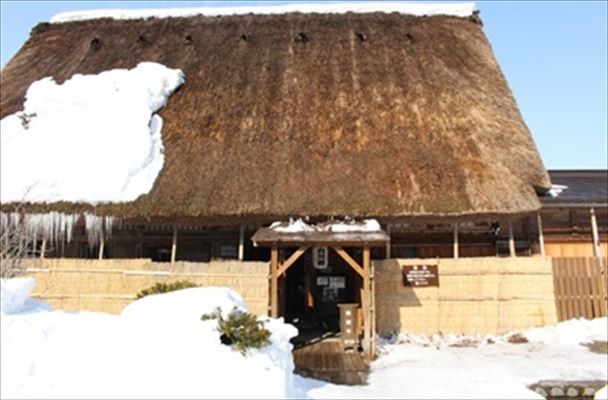


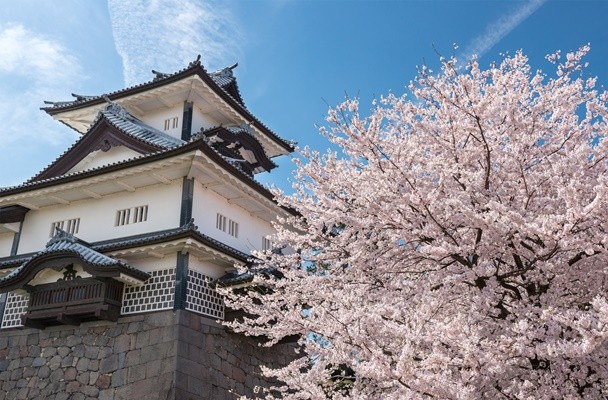
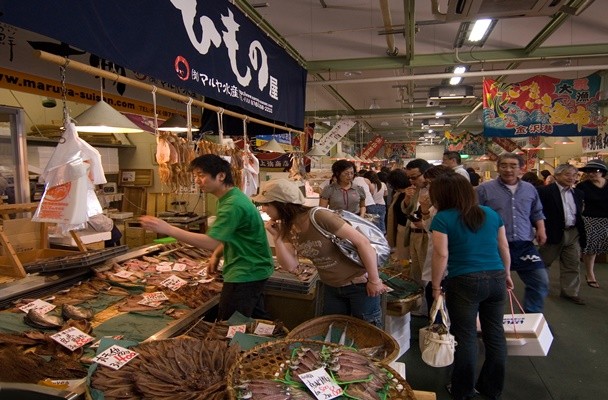
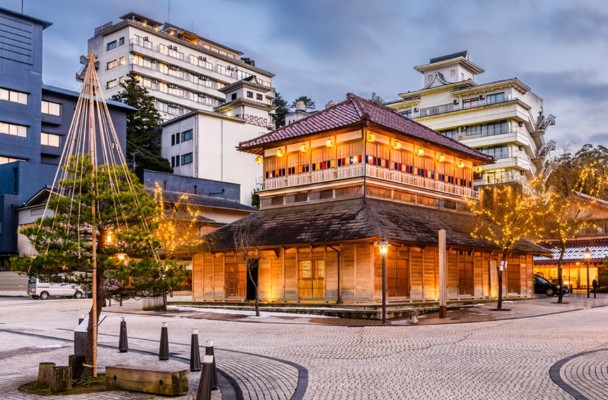
Comments